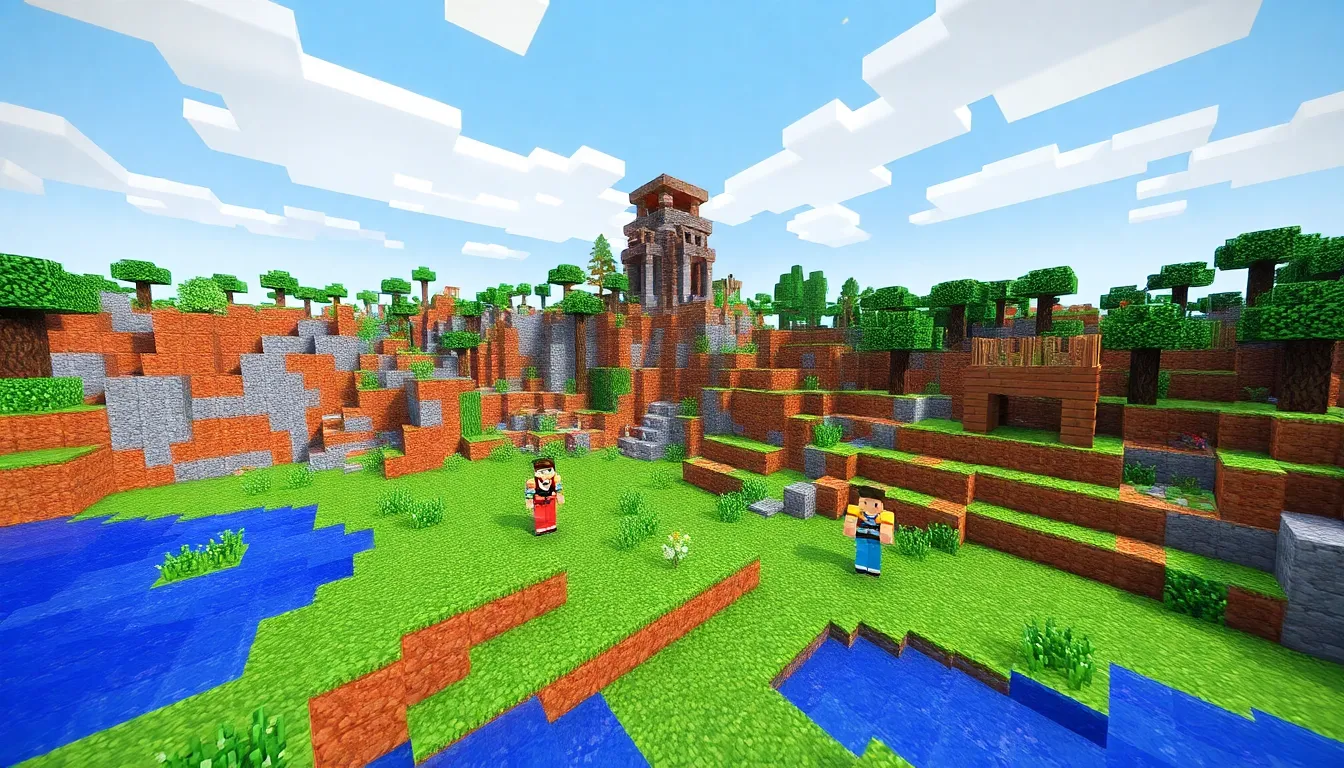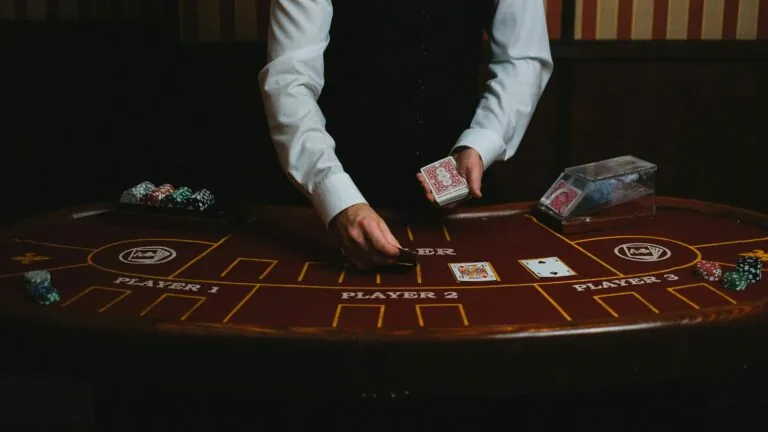In the whimsical world of Minecraft, blocks aren’t just building materials; they’re the very foundation of creativity. Whether players are crafting castles, digging mines, or building roller coasters that defy the laws of physics, knowing the right blocks can make or break a masterpiece. Imagine trying to build a grand fortress with nothing but dirt blocks—talk about a design disaster!
Table of Contents
ToggleOverview of Minecraft Block List
Minecraft features over 1,500 unique blocks, each serving different purposes in gameplay. These blocks comprise essential materials for crafting items, constructing buildings, and creating intricate landscapes. Some blocks, like dirt and stone, form the foundation of many builds, while others provide aesthetic appeal, such as colored terracotta and stained glass.
Players often favor versatile blocks, such as wood and stone, for their varied applications. Wood can be crafted into planks for construction or used to create tools. Stone, on the other hand, offers durability and can withstand explosions, making it ideal for defensive structures.
Specialty blocks enhance creativity and gameplay mechanics. Redstone blocks allow players to create complex contraptions, while command blocks can execute various commands, providing unique game experiences. Additionally, blocks like obsidian are essential for crafting portals to the Nether, expanding gameplay opportunities.
Block variations, including different colors and textures, enable personalized designs. Players can combine various blocks to achieve unique architectural styles, fostering individuality in constructions. The choice of blocks determines not just functionality but also the visual appeal of builds.
Categorizing blocks into types—natural, building, decorative, and utility— aids players in navigating their options. Natural blocks include ores and plants, while building blocks cover the materials used for structures. Decorative blocks enhance aesthetics, and utility blocks contain special functions, influencing gameplay mechanics.
Engaging with the Minecraft block list provides players with endless creative potential. Understanding the properties and uses of each block can significantly enhance building strategies and overall gameplay experience. As players explore and utilize different blocks, they discover countless possibilities for innovation and design.
Types of Blocks

Blocks in Minecraft come in various types, each serving distinct purposes and enhancing gameplay experiences. Understanding these types enables players to make informed decisions regarding their builds and strategies.
Natural Blocks
Natural blocks form the foundation of any Minecraft world. These include dirt, grass, stone, and ores. Players often encounter natural blocks while exploring, gathering resources essential for crafting and construction. Grass blocks support vegetation, while stone blocks provide durability for structures. Soil blocks aid in farming, enabling the growth of crops. Natural blocks represent the game’s initial palette for creativity, offering endless combinations.
Man-Made Blocks
Man-made blocks encompass those crafted through player actions. These blocks include wood, bricks, and concrete. Wood blocks come from cutting down trees, providing both aesthetic and functional uses. Players can create bricks by smelting clay, offering a sturdy building option. Many players favor concrete for vibrant designs, as it comes in various colors. Such blocks expand the building possibilities, giving players creativity in design and functionality.
Functional Blocks
Functional blocks enhance gameplay mechanics beyond traditional building. This category includes redstone, pistons, and command blocks. Redstone connects mechanisms, allowing players to create complex devices like doors and traps. Pistons enable players to move blocks, facilitating unique building techniques. Command blocks provide powerful commands for map-making or game modification. By incorporating functional blocks, players unlock new dimensions of gameplay, elevating their creativity to unprecedented levels.
Essential Blocks for Gameplay
Understanding essential blocks enhances the Minecraft experience, enabling players to craft and build effectively. Players rely on various blocks in different contexts, each serving a unique purpose.
Crafting Blocks
Crafting blocks play a crucial role in creating items and tools. Players use crafting tables to combine resources into more complex items. Furnaces, another essential crafting block, smelt ores and cook food. Anvils allow for repairing items and combining enchantments, while cauldrons provide water storage for various purposes. These blocks form the backbone of resource management and crafting efficiency in gameplay.
Building Blocks
Building blocks determine the aesthetic and functional quality of structures. Players frequently use stone and wood for foundational designs, as these materials provide durability. Colored concrete and terracotta offer colorful options for creative builds. Glass blocks enable players to add transparency and light to structures, enhancing their visual appeal. Additionally, specialty blocks like glazed terracotta offer unique patterns, further diversifying building possibilities in creative projects. Each block contributes to the overall design and function of creations.
Unique Blocks and Their Features
Minecraft offers a myriad of unique blocks, each contributing distinct characteristics and functions within the game. Players can explore and utilize these blocks to enhance creativity and improve their building strategies.
Rare Blocks
Some blocks possess rarity that makes them sought-after gems in the game. Emerald ore appears in mountain biomes and serves as a valuable resource for trading. Another example is the diamond ore, found deep underground, which yields the coveted diamonds used for crafting powerful tools and armor. Netherite blocks, crafted from ancient debris, provide the best durability and are essential for advanced gameplay. Obtaining these rare blocks requires exploration and careful mining techniques, making their collection rewarding for dedicated players.
Block Variants
Variants of blocks expand the creative possibilities within Minecraft. For instance, stone comes in several forms, including smooth stone, cobblestone, and polished stone, each offering different aesthetics. Wood types vary significantly, with oak, birch, spruce, and jungle wood displaying unique textures and colors. Each block variant serves specific design needs while allowing builders to mix and match for innovative creations. Glass also presents options, from regular glass to stained and tinted glass, enabling players to customize their structures further. These variations reinforce individual styles while enhancing overall gameplay dynamics.
Exploring the vast array of blocks in Minecraft opens up endless possibilities for creativity and innovation. Each block plays a vital role in shaping the gameplay experience and enhancing building strategies. By understanding the unique properties and uses of various blocks players can elevate their constructions from basic to extraordinary.
Whether it’s the foundational strength of stone or the vibrant colors of terracotta and glass players are equipped to create stunning designs. The diversity of block types encourages experimentation and personalization allowing players to express their individual styles. Embracing this extensive block list not only enriches gameplay but also inspires players to push the boundaries of their creativity in the world of Minecraft.


